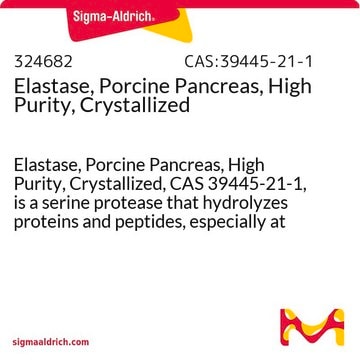The major differences between the different types of Elastase are as follows:
E1250: Type I, aqueous suspension, >4 units/mg protein, <50 units/mg protein Trypsin. Contains Thymol as an antimicrobial, which is toxic to cells.
E6883: Type IIA, discontinued
E0127: Type III, lyophilized powder, >4 units/mg protein, <200 units/mg protein Trypsin.
E0258: Type IV, lyophilized powder, >4 units/mg protein, <50 units/mg protein Trypsin, further purification of E0127.
E7885: Bioreagent, lyophilized powder, suitability tested for use in cell culture, >4 units/mg protein, <50 units/mg protein Trypsin.
45125: Lyophilized powder, >6.4 units/mg protein, not tested for Trypsin impurity.






![N-[3-(2-Furyl)acryloyl]-Leu-Gly-Pro-Ala](/deepweb/assets/sigmaaldrich/product/structures/805/876/96b5fb57-71c8-4c6b-b5d2-fafe7374cd85/640/96b5fb57-71c8-4c6b-b5d2-fafe7374cd85.png)







